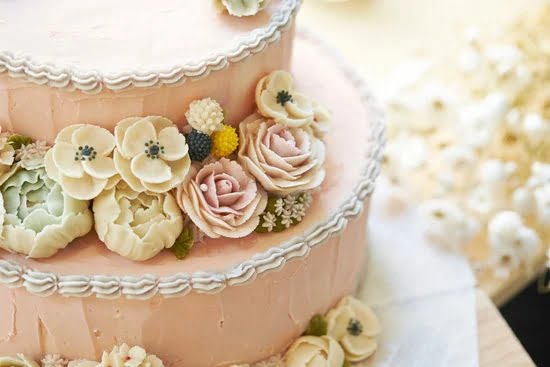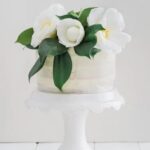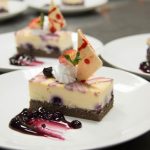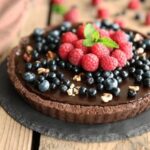Cake decorating is a beautiful and creative art form that can transform an ordinary cake into a stunning masterpiece. Whether you’re a complete beginner or an experienced baker, mastering the art of cake decorating can take your creations to the next level. One of the most important aspects of cake decorating is understanding the different types of cake decorating tips and their functions.
Cake decorating tips come in various shapes, sizes, and designs, each serving a specific purpose in creating unique decorations. From creating smooth, even surfaces on cakes to adding intricate designs and textures, these tips are essential tools for any aspiring cake decorator. Learning how to use them properly will help you achieve professional-looking results at home.
With so many options available, it’s important to understand the function of each type of cake decorating tip. Some tips are used for piping smooth lines or creating borders, while others are designed for adding intricate details or creating three-dimensional effects. By familiarizing yourself with these different tips and their purposes, you’ll be able to choose the right tool for every decoration technique.
In this article, we will explore the world of cake decorating tips in depth. We’ll discuss the different types of tips available and their functions, from basic techniques such as piping and borders to more advanced designs.
Additionally, we’ll provide step-by-step instructions specifically tailored for beginners to help them create perfect decorations every time. With insights from professional bakers and pastry chefs, as well as recommendations for top-quality supplies, you’ll have all the resources necessary to take your cake decorating skills from amateur to expert.
Understanding the Different Types of Cake Decorating Tips and Their Functions
Cake decorating tips come in various shapes and sizes, each with its own distinctive function. Understanding the different types of cake decorating tips and their functions is essential for achieving professional-looking cake designs. Here are some of the most common cake decorating tips and what they are used for:
- Round Tips (example: #3, #5, #12): These tips are perfect for creating dots, outlining and filling in shapes, writing messages, and creating basic decorations like flower centers or pearls.
- Star Tips (example: #18, #21, #32): With their star-shaped openings, star tips can be used to create beautiful rosettes, stars, shells, zigzags, ruffles, drop flowers, and more.
- Leaf Tips (example: #65): Leaf tips have a curved shape that allows you to create realistic leaves with veining details. They can also be used to make ruffles and other decorative elements.
- Petal Tips (example: #101): Petal tips have a wide base and narrow tip that allows you to create realistic flower petals. They are commonly used for making roses or other floral designs.
- Basketweave Tips (example: #47): Basketweave tips have a unique rectangular opening that allows you to create basketweave patterns on your cakes. They can also be used for making bows and ribbons.
- Grass Tips (example: #233): Designed with multiple small holes in a cluster pattern, grass tips are perfect for creating textured surfaces like grass or fur. They are frequently used in cake designs featuring animals or nature themes.
| TIP TYPE | FUNCTION |
|---|---|
| Round Tips | Create dots, outline/fill shapes, write messages. |
| Star Tips | Create rosettes, stars, shells, zigzags, drop flowers. |
| Leaf Tips | Create realistic leaves, ruffles, decorative elements. |
| Petal Tips | Create realistic flower petals (e.g., roses). |
| Basketweave Tips | Create basketweave patterns, bows, ribbons. |
| Grass Tips | Create textured surfaces like grass or fur. |
Mastering the use of different cake decorating tips will enable you to unleash your creativity and create stunning designs for any occasion. Experimenting with different tip sizes and techniques will help you develop your own style and unique decorations. It is always recommended to practice on a separate surface or parchment paper before applying the design directly onto your cake to ensure accuracy and achieve the desired outcome.
Remember that while each cake decorating tip has its specific function, many designs can be created by combining different tips together. Don’t be afraid to mix and match to achieve the desired effect. With practice and patience, you will soon become comfortable with using various types of cake decorating tips and be able to create beautiful cakes that will wow your friends and family.
Essential Tools for Cake Decorating
Cake decorating requires a variety of tools to achieve beautiful and professional-looking designs. Whether you are a beginner or an experienced cake decorator, having the right tools is essential for success. In this section, we will provide a comprehensive guide to the essential tools for cake decorating.
- Cake Decorating Tips: Cake decorating tips, also known as piping tips or icing tips, are one of the most important tools for cake decoration. These metal or plastic tips attach to piping bags and come in various shapes and sizes to create different designs such as flowers, stars, shells, and more.
Some common types of cake decorating tips include round tips, star tips, leaf tips, petal tips, and drop flower tips. It is recommended to have a variety of these tips in your collection to achieve different effects and designs. - Piping Bags: Piping bags are another crucial tool in cake decorating. These cone-shaped bags are made of cloth or disposable plastic and are used to hold icing or frosting for piping onto cakes. They come in various sizes and can be reusable or disposable depending on your preference. It is recommended to have different sizes of piping bags on hand to accommodate different amounts of icing and various techniques.
- Couplers: Couplers are small devices that allow you to easily change the cake decorating tip attached to your piping bag without emptying out all the icing inside. They consist of two parts – a base that screws onto the bag’s opening and a ring that holds the tip securely in place. Having couplers eliminates the need for multiple piping bags if you want to switch between different decorating tips during a single project.
- Turntable: A turntable is an excellent investment for cake decorators as it makes frosting and decorating cakes much easier. This rotating stand allows you to smoothly turn your cake while applying frosting or decoration without having to move around it manually. It provides better control over the design process by allowing you to keep the cake at eye level and reach all sides easily.
- Offset Spatulas: Offset spatulas are specially designed tools with a long, flexible blade and an angled handle. These spatulas are used for spreading and smoothing frosting on cakes. The offset angle allows you to easily glide over the cake’s surface without your hand getting in the way or touching the freshly applied icing.
Having these essential tools in your cake decorating arsenal will set you up for success in creating beautiful and professional-looking cakes. By investing in high-quality tools and gradually adding to your collection, you can explore and master various techniques to take your cake decorating skills to the next level.
Mastering the Basic Techniques
Piping and borders are basic techniques in cake decorating that every aspiring baker should master. These techniques add a professional touch to any cake and can be used to create beautiful, intricate designs. Here are some tips and step-by-step instructions to help you perfect your piping and border skills.
Piping Techniques
Piping is the process of using a pastry bag and decorating tip to apply frosting or icing to a cake. There are several different types of piping techniques that can be used to create various designs such as flowers, stars, dots, and writing. Here are some common piping techniques:
- Round Piping: This technique involves applying even pressure on the pastry bag while moving in a circular motion to create small dots or beads.
- Star Piping: With a star-shaped tip, you can create beautiful rosettes, shells, or stars by applying even pressure on the bag and releasing it while pulling away.
- Leaf Piping: Leaf tips are used to create realistic leaves by applying gentle pressure on the bag and making a slightly curved motion.
- Writing: To write messages or personalize cakes, use a small round or thin writing tip with firm pressure on the bag.
Border Techniques
Borders help define the edges of your cake and give it a polished look. They can be simple or intricate depending on your skill level and design preference. Here are some popular border techniques:
- Shell Border: Create shell-like shapes along the bottom edge of your cake by squeezing icing out in short bursts while moving side-to-side.
- Ruffle Border: This technique creates frilly edges by using a petal tip and making back-and-forth motions while applying steady pressure.
- Rope Border: Create a twisted rope-like border by using a rope tip and moving it in a snakelike motion along the edge of the cake.
- Fence Border: This technique involves using a basketweave tip to create a fence-like pattern by making vertical lines and then alternating with horizontal lines.
By practicing these piping and border techniques, you’ll gain more confidence in your cake decorating skills and be able to create stunning designs. Remember to start with simple patterns and gradually progress to more complex ones as you become more comfortable with the basics.
Advanced Techniques
Once you have mastered the basic techniques of cake decorating, it’s time to take your skills to the next level and start creating intricate designs. With the right cake decorating tips, you can create stunning patterns, textures, and designs that will impress your friends and family. In this section, we will explore some advanced techniques that will help you achieve professional-looking cakes.
Lace Designs
One popular technique for creating intricate designs is using cake decorating tips to create lace patterns on cakes. This technique involves piping a delicate lace design onto the surface of the cake using a fine tip. You can use royal icing or buttercream for this technique, depending on the desired effect.
To create a lace design, start by sketching out your design on a piece of parchment paper. Then transfer the design onto the cake using an edible marker or toothpick as a guide. Next, fill a piping bag fitted with a small round tip with royal icing or buttercream and pipe over the design, following your guide. Be sure to practice your piping technique before attempting this intricate design.
Sculpted Flowers and Figures
Another way to create intricate designs with cake decorating tips is by sculpting flowers and figures out of fondant or gum paste. These edible decorations can add a touch of elegance and whimsy to any cake design.
To sculpt flowers, start by rolling out fondant or gum paste into thin sheets. Use petal shaping tools and flower cutters to cut out petals in various sizes and shapes. Assemble the petals together using edible glue or water to adhere them together. Finish by adding details such as centers and stamens using small round tips.
For figurines, start by shaping the body parts individually out of fondant or gum paste. Use different cake decorating tips to create textures and add details such as facial features and clothing. Assemble the parts together using edible glue or water, and allow them to dry and harden before placing them on the cake.
Stenciling
Stenciling is another advanced technique that can create intricate designs with ease. It involves using a stencil to create patterns or images on the surface of the cake using royal icing or buttercream.
To stencil a design onto a cake, start by securing the stencil onto the cake using tape or pins. Fill a piping bag fitted with a small round tip with royal icing or buttercream and pipe over the stencil, covering all areas of the design. Carefully remove the stencil and allow the design to dry before adding any additional decorations.
By incorporating these advanced techniques into your cake decorating repertoire, you can elevate your creations to a whole new level. Remember to practice each technique before attempting them on a final cake and don’t be afraid to experiment with different designs and combinations of tips for unique results. With time and practice, you’ll be able to create beautiful and intricate designs that will leave everyone in awe of your cake decorating skills.
Troubleshooting Common Cake Decorating Mistakes and How to Fix Them
Cake decorating can be a challenging art form, and even the most experienced decorators occasionally encounter mistakes. However, with some troubleshooting and quick thinking, these errors can often be fixed to salvage your cake creation. In this section, we will explore some common cake decorating mistakes and provide solutions for fixing them.
One common mistake in cake decorating is air bubbles forming underneath the fondant or buttercream icing. These air bubbles can create an uneven surface and ruin the overall appearance of the cake. To fix this issue, you can use a small pin or needle to gently poke holes into the bubble. Then, use your finger or a smoothing tool to press out any excess air while smoothing out the surface.
Another common mistake is when the piping doesn’t come out smoothly or consistently. This may be due to air pockets forming within the piping bag. To fix this issue, simply squeeze the icing back into the bowl, release any trapped air by giving it a few gentle taps on the countertop, then refill the bag and try again.
Additionally, cake layers that are not levelled properly can result in an uneven cake structure. If you notice that your layers are uneven, you can carefully trim them using a serrated knife or a cake leveler. Take your time and work slowly to ensure that each layer is perfectly aligned.
| Common Mistake | Solution |
|---|---|
| Air bubbles in fondant or buttercream icing | Poke small holes in the bubble and smooth out surface |
| Inconsistent piping | Squeeze out trapped air and refill piping bag |
| Uneven cake layers | Trim layers using a serrated knife or cake leveler |
By having some troubleshooting techniques up your sleeve, you can confidently overcome common cake decorating mistakes. Remember, practice and patience are key when it comes to mastering this art form. With each mistake you encounter and fix, you will only grow as a cake decorator and be better prepared for future creations.
Tips for Beginners
Decorating a cake can seem like an intimidating task, especially for beginners. However, with the right tips and step-by-step instructions, you can create beautiful and professional-looking cake decorations. This section will provide beginners with helpful guidelines for achieving perfect cake decorations.
Gathering the Necessary Supplies
Before starting your cake decorating journey, it’s essential to gather all the necessary supplies. Some basic tools you will need include a turntable to rotate the cake while decorating, a piping bag and couplers to hold different tips, an offset spatula for smoothing icing, and an assortment of decorating tips. Additionally, make sure to have a good quality icing and food coloring gel to add vibrant colors to your creations.
Preparing Your Cake
To start decorating your cake, it’s crucial to prepare it properly. Level and trim the tops of your cakes if necessary to ensure even layers. Apply a crumb coat by spreading a thin layer of icing all over the cake to lock in any loose crumbs. Allow this coat to set before applying the final layer of icing.
Piping Techniques
Piping is one of the fundamental techniques in cake decorating that allows you to create various designs such as borders, flowers, and lettering. To begin piping, fill your piping bag with icing and attach your desired tip. Hold the bag firmly but gently squeeze from the top while guiding it with your other hand. Practice different pressure techniques to achieve varying effects like thinner or thicker lines.
Adding Borders
Borders are a great way to finish off your cake and give it a polished look. There are several border designs you can choose from depending on your preference or theme of the cake. A classic border design is a shell border where you pipe small shells around the edges of the cake. You can also experiment with other border designs such as rope, bead, or zigzag patterns.
By following these step-by-step instructions and practicing regularly, beginners can quickly improve their cake decorating skills and create impressive designs. Remember, it’s important to have patience and enjoy the process as cake decorating is an art that allows you to showcase your creativity and bring joy to others through beautiful and delicious treats.
Top Cake Decorating Tips from Professional Bakers and Pastry Chefs
Professional bakers and pastry chefs are masters of the art of cake decorating. They have spent years perfecting their craft and honing their skills, so it’s no surprise that they have some valuable tips to share. Whether you’re a beginner or an experienced cake decorator, the following tips from the pros can help take your creations to the next level.
One tip that is often emphasized by professional bakers and pastry chefs is the importance of using high-quality ingredients. The taste and texture of a cake can greatly impact its overall appeal, so opting for premium ingredients can make a significant difference. From using real vanilla extract instead of imitation, to selecting fresh and seasonal produce for fillings and toppings, professional decorators know that quality ingredients lead to impressive results.
Another valuable tip from the pros is to practice patience and take your time when working on intricate designs. It’s easy to rush through a project, especially when there are many details to attend to. However, professionals stress the importance of slowing down and taking each step deliberately. This allows for greater precision in piping techniques, smoother finishes on fondant decorations, and an overall more polished end result.
Lastly, top bakers and pastry chefs advise aspiring cake decorators to seek inspiration from various sources. From browsing through magazines and cookbooks, to scrolling through social media platforms like Instagram and Pinterest, there are endless possibilities for finding new ideas and staying current with trends. It’s equally important to attend workshops or classes hosted by industry experts where you can learn new techniques directly from those who excel at them.
By following these tips from professional bakers and pastry chefs, you’ll be well-equipped to elevate your cake decorating skills. Remember that practice makes perfect, so don’t be discouraged if your first attempts aren’t flawless. With dedication, creativity, and a commitment to continuous learning, you’ll soon be creating beautiful cakes that impress everyone who sees them.
Taking Your Cake Decorating Skills to the Next Level
Special occasions and themed cakes require a higher level of skill and creativity in cake decorating. These types of cakes can be a fun and exciting way to showcase your talent and impress your friends and family. In this section, we will explore some tips and techniques for taking your cake decorating skills to the next level for special occasions and themes.
One important aspect to consider when creating special occasion cakes is the theme or event you are designing for. Whether it’s a birthday party, wedding, baby shower, or holiday celebration, incorporating elements that reflect the theme can make your cake truly stand out. Researching and gathering inspiration from sources such as magazines, books, and online platforms can help you generate ideas for design elements, color schemes, and decorations.
Another key factor in taking your cake decorating skills to the next level is mastering more advanced techniques. For example, using fondant or gum paste to create intricate designs such as flowers or figurines can add an impressive touch to your cakes. Learning how to work with these mediums through classes or tutorials can greatly enhance your skills in cake decorating.
Furthermore, acquiring specialized tools for specific occasions or themes can greatly improve the overall look of your cakes. For example, investing in shaped pans or molds that are designed for specific events like birthdays or holidays can help you achieve more professional-looking results. Additionally, using specialty tools such as stencils or edible images can add intricate details effortlessly.
By putting these tips into practice and continually pushing yourself to learn new techniques and acquire new tools specific to special occasions and themes, you will be able to elevate your cake decorating skills significantly. With dedication, practice, and attention to detail, you can amaze others with beautifully decorated cakes that match any event or theme perfectly.
Resources and Recommendations for Cake Decorating Tips and Supplies.
In conclusion, cake decorating is an art that can be mastered with dedication, practice, and the right tools. Throughout this article, we have explored the different types of cake decorating tips and their functions, essential tools for cake decorating, and various techniques for creating beautiful designs on cakes.
When it comes to resources and recommendations for cake decorating tips and supplies, there are a plethora of options available. It is important to invest in high-quality tools that will withstand the test of time and produce professional results. Do your research and read reviews to find reputable brands that offer a wide range of tips for all your decorating needs.
Additionally, consider joining online communities or forums dedicated to cake decorating where you can connect with fellow enthusiasts and professionals. These platforms often share valuable tips, tricks, and recommendations for specific products or suppliers. You can also attend workshops or classes hosted by experts in the field to learn new techniques and gain inspiration.
Frequently Asked Questions
What do different cake decorating tips do?
Different cake decorating tips serve various purposes in creating unique and beautiful designs on cakes. For example, a round tip is commonly used for writing or creating outlines, while a star tip produces textured and decorative borders. Petal tips are great for making realistic flower petals, and leaf tips create lifelike foliage patterns.
Open and closed star tips can form rosettes or stars with different levels of intricacy. Additionally, there are specialty tips like the grass tip, which can be used to replicate grass or hair textures on cakes.
How do you use cake decorating tips?
Using cake decorating tips requires some basic steps to achieve the desired outcome. First, attach the chosen tip to a piping bag filled with frosting or icing. Next, hold the piping bag at an angle of about 45 degrees above the cake surface and gently apply pressure to pipe out the frosting, starting from a desired point on the cake.
Maintaining a steady hand and consistent pressure will result in smooth lines or defined shapes depending on the tip being used. It’s essential to practice piping techniques before attempting complex designs to gain confidence and proficiency.
What are the steps in decorating a cake?
Decorating a cake involves several steps that culminate in a visually appealing finished product. The first step is preparing the cake by trimming any domed tops or uneven edges to ensure an even canvas for decoration. Applying a crumb coat of frosting allows for smoother final layers as it seals in any loose crumbs.
Once the crumb coat has set, spread another layer of frosting evenly across the entire cake surface using an offset spatula or bench scraper for optimal smoothness. This second layer serves as a foundation for more intricate decorations.

Welcome to our cake decorating blog! My name is Destiny Flores, and I am the proud owner of a cake decorating business named Cake Karma. Our mission is to provide delicious, beautiful cakes for all occasions. We specialize in creating custom cakes that are tailored specifically to each customer’s individual needs and tastes.





